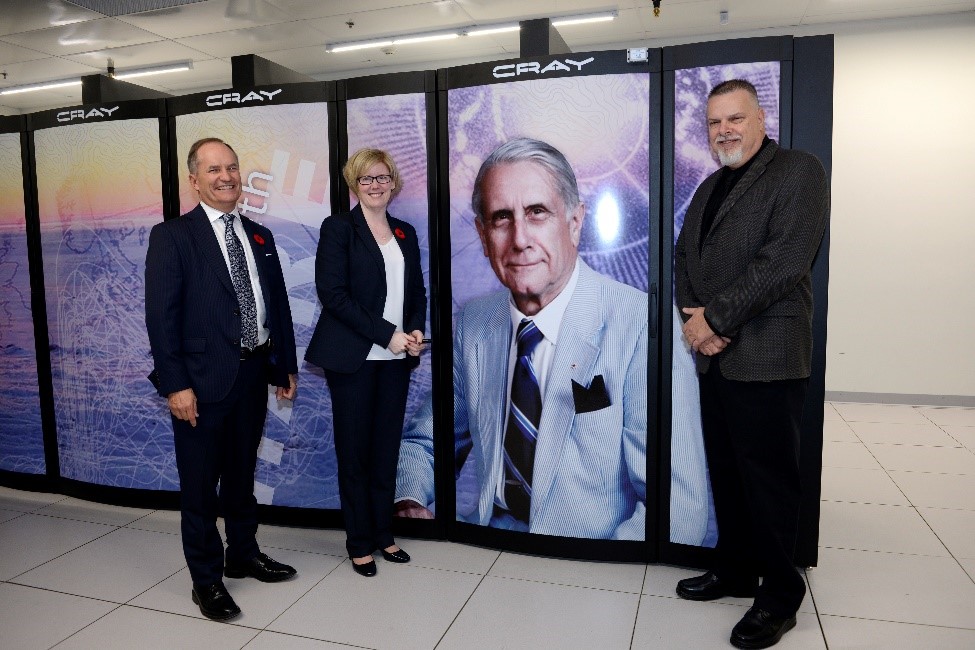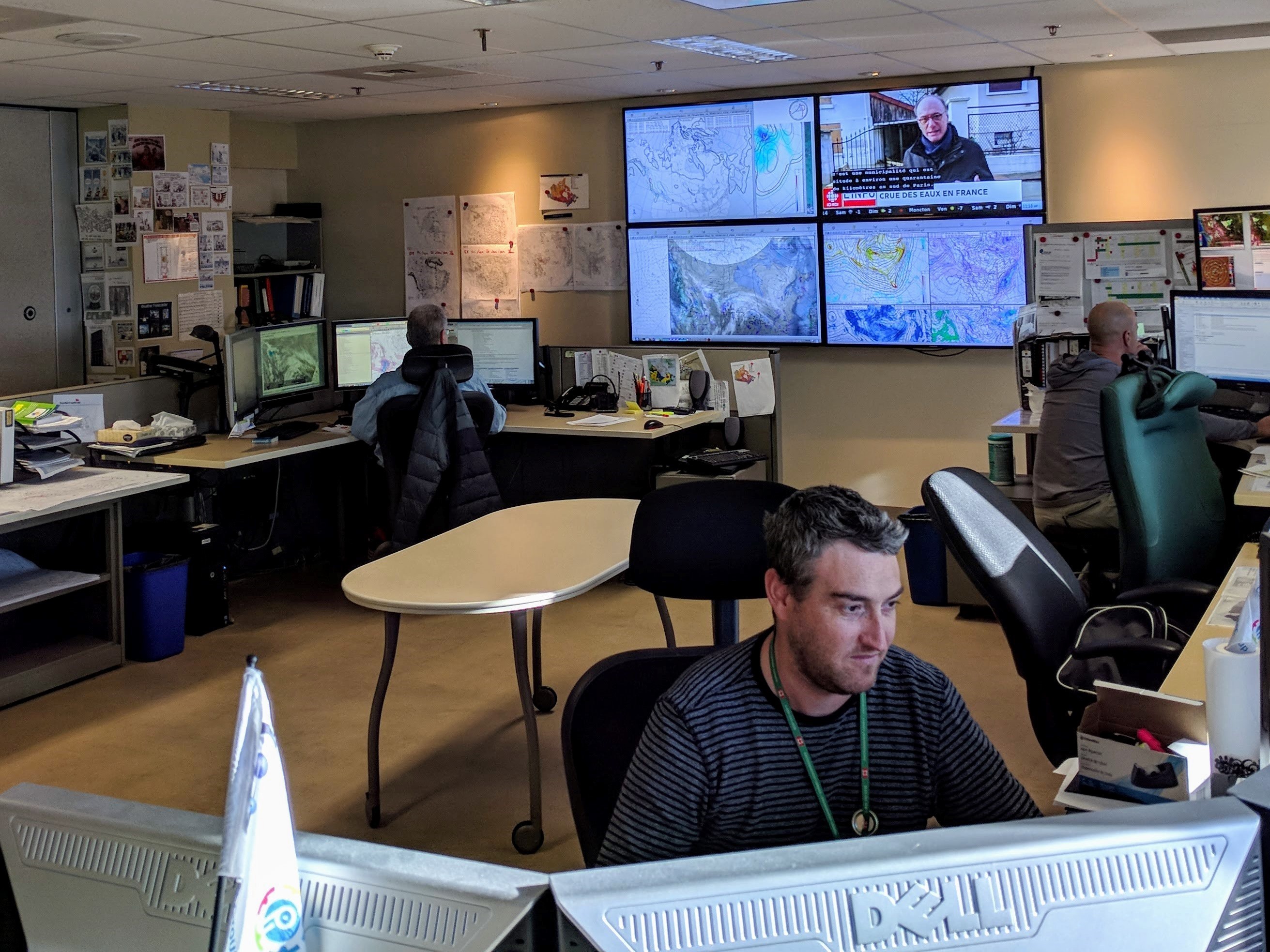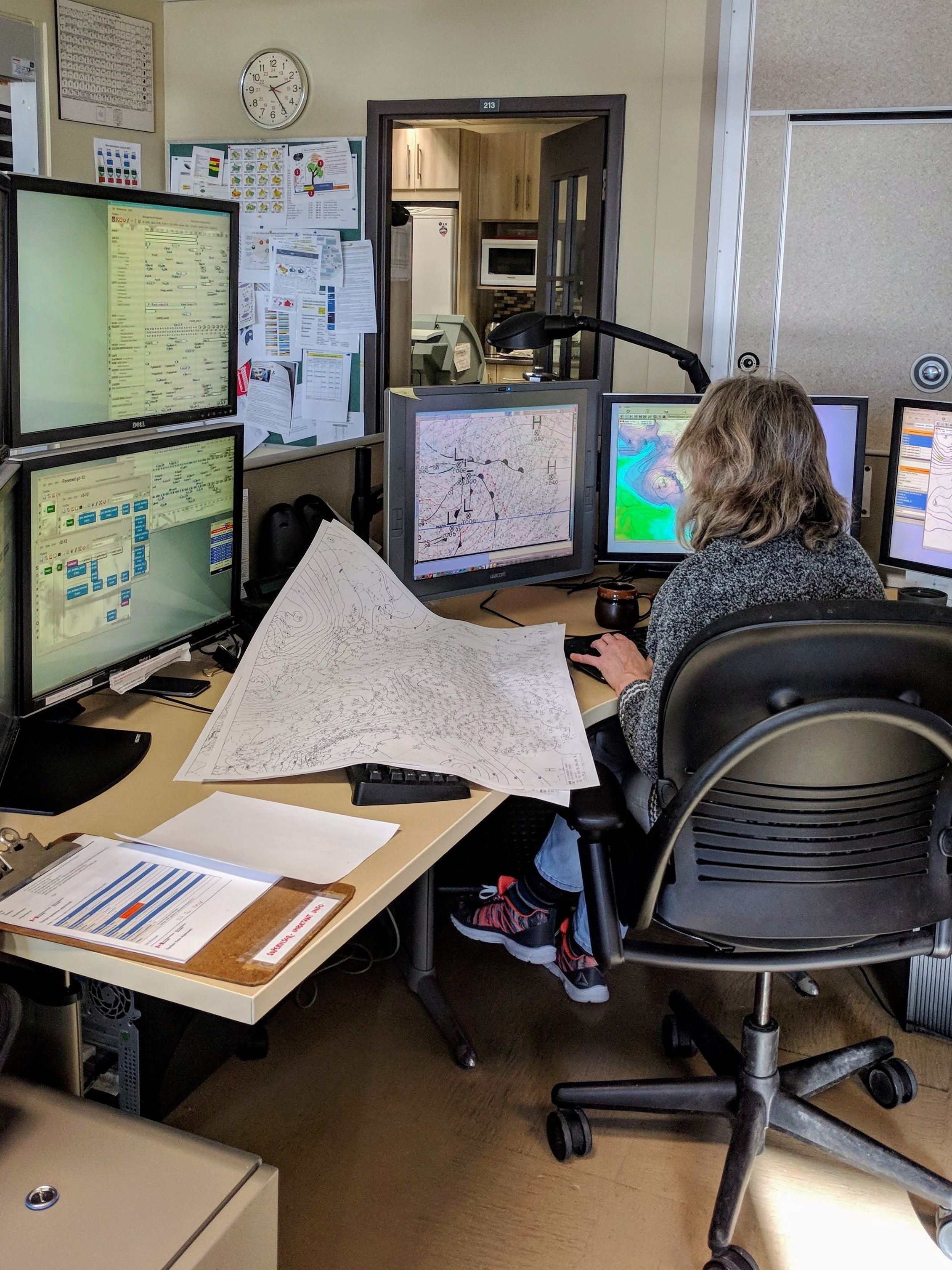Weather forecasts through high performance computing
Whether we’re planning our morning commute in mid-February or dreaming about a camping holiday in mid-July, we make our decisions based on what’s happening outside. In today’s context of climate change, with its increasing storms, floods, air quality alerts, droughts, accelerated warming in the Arctic and changing weather patterns, information on the weather gets more critical by the day.

Figure 1: Ron Parker, Carla Qualtrough and Robin Hare in front of the supercomputer. Panels on the supercomputer feature a portrait of Dr. Kenneth Hare.
The Canadian Centre for Meteorological and Environmental Prediction (CCMEP), part of Environment and Climate Change Canada (ECCC), is the nerve centre for producing the forecasts we depend on. On the job 24/7/365, this operational centre in Dorval, Quebec, models the atmosphere around the globe and calculates how it will change over time, based on massive amounts of data and complex simulation programs. Helping it to do this job is a ![]() High Performance Computing (HPC) Solution, with its recently upgraded state-of-the-art supercomputers.
High Performance Computing (HPC) Solution, with its recently upgraded state-of-the-art supercomputers.
Shared Services Canada’s migration of ECCC’s operational applications to the new HPC Solution employed by the Meteorological Service of Canada was completed in September 2017. This upgrade is part of the HPC Renewal Project, a large-scale, multi-year undertaking, and it is the first partnership of its kind between SSC and ECCC. Over the course of the migration, the joint SSC/ECCC project team met daily to plan, implement and monitor progress, and project leaders leveraged partnerships with other meteorological and hydrological services in the US, Germany, the UK, Switzerland and the EU to share best practices and lessons learned.
Shared Services Canada (SSC) manages and administers the HPC Solution, along with the IT network and related computer systems and middleware, and the telecommunications system upon which the weather program depends.
The HPC Solution includes four large scale computing clusters, two big ones and two smaller ones. The two bigger components are the supercomputers named after two Canadian scientists: Harriet Brooks (1876–1933), Canada’s first female nuclear physicist who worked with Marie Curie and later contributed to research on radon gas; and Dr. Kenneth Hare (1919–2002), an environmental science advocate and one of the first to raise the alarm about carbon-driven climate change.
ECCC uses the supercomputers to improve the accuracy and timeliness of forecasts and weather warnings. Other departments also benefit from the output of the supercomputers, including Health Canada for the Air Quality Health Index program, Fisheries and Oceans for ocean modelling, and Public Safety Canada for environmental emergency prevention and response.
Inside the nerve centre
This newly installed information technology infrastructure provides ECCC with the latest technology and computing capacity. Meteorological analysts monitor and analyze the weather simulations around the clock. They work closely with SSC and, if a problem is detected, they join forces to raise the alarm and coordinate the response.

Figure 2: CCMEP Operations Centre. From left to right: Marc Larocque, Pascal Dehasse, Benoit Fournier.

Figure 3: CCMEP Operations Centre. Marielle Alarie.
In early January 2018, a change in the weather pattern allowed Arctic air to flow southward. The simulations generated by the HPC Solution played an important role in preparing Canadians for the unusually cold temperatures. Information from ECCC enabled New Brunswick Hydro, for example, to pre-position crews to react to local impacts, such as downed power lines. Longer lead times can make a critical difference. For Véronique Bouchet, Director of Operations at CCMEP, the new computing environment “… will continue to be helpful, because we have more data and faster speed, which we expect will make us more effective over time.”
“SSC and the CCMEP IT staff are critical to the success of the operational centre,” sums up Véronique. “The work we do helps protect Canadians’ homes and businesses, keeps them safe and secure, and helps them plan their day-to-day activities. We see the results and we know that we’re having an impact.”